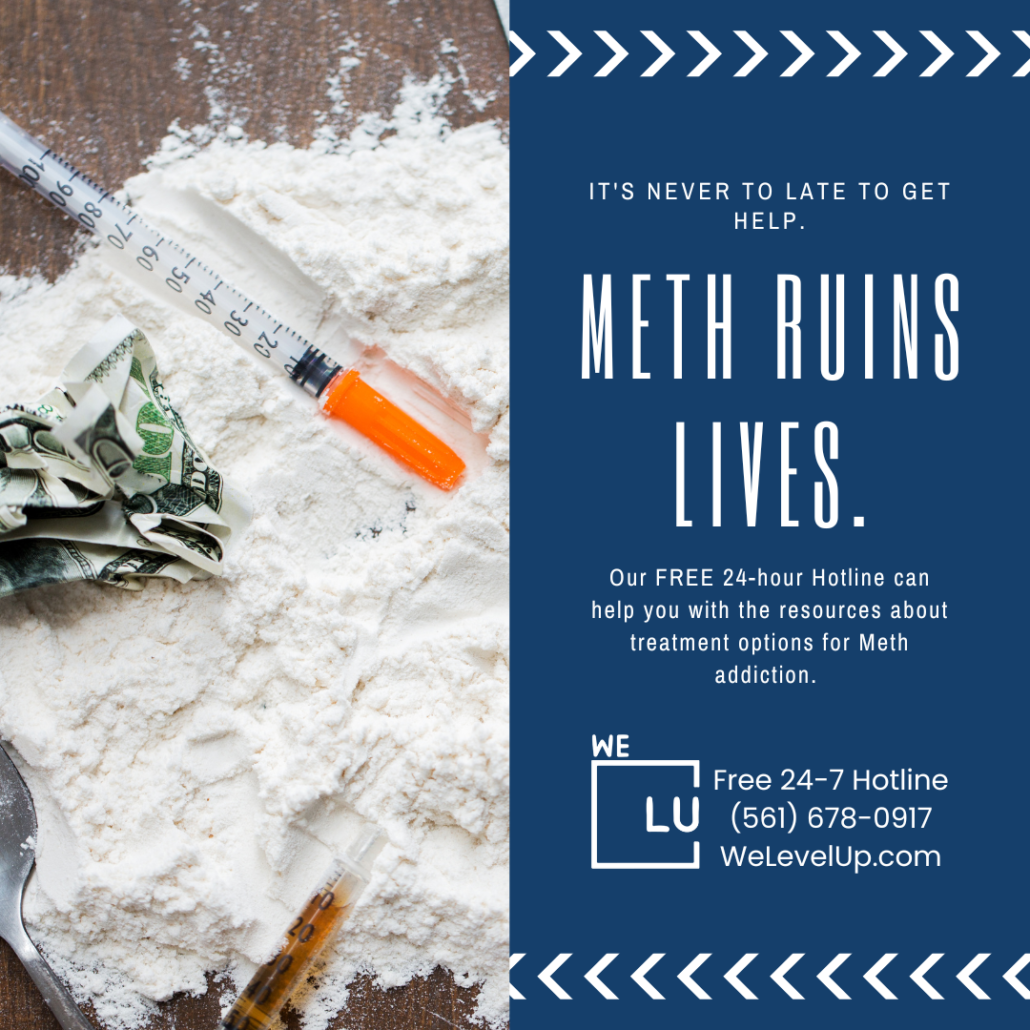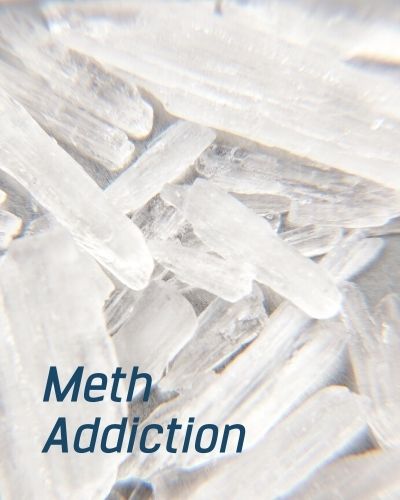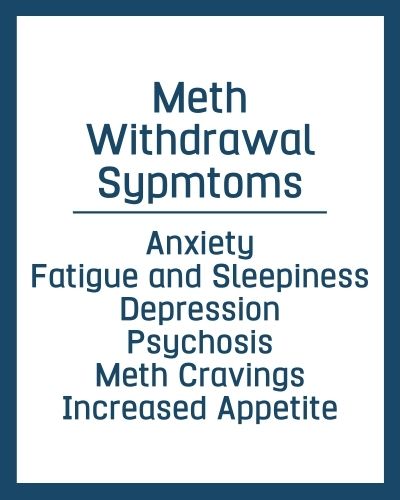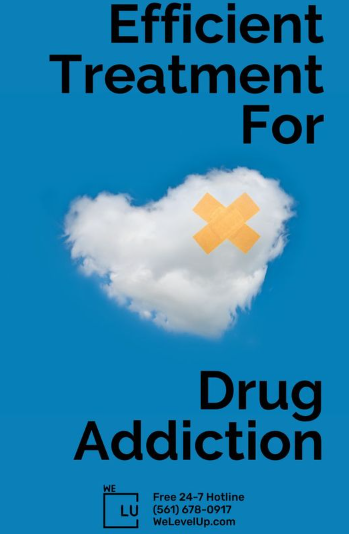Meth Eyes – The Effects of Meth on The Eyes
Methamphetamine (Meth) is a highly addictive illicit drug whose abuse has spread worldwide during the past two decades. Methamphetamine can cause crystalline deposits in the retina, leading to vision problems. Meth addiction is linked with many adverse psychiatric and medical consequences, including strokes and substance-induced psychosis. Meth-induced ophthalmic complications are rarely talked about but include retinal vasculitis, episcleritis, panophthalmitis, endophthalmitis, scleritis, retinopathy, corneal ulceration, and transient visual losses.
While meth can noticeably impact a person’s health, their physical appearance can also be affected. Meth and crystal meth abuse may lead to unsightly sores. You just need to know what to look for. If you suspect that your loved one is abusing meth, you may be able to tell just by looking at their eyes. There are several effects that meth can have on the eyes. It essentially just depends on how long the person has been abusing meth.
What is Meth Eyes?
Meth eyes, also known as crystal meth eyes, refers to a wide range of signs and symptoms linked with meth abuse. When you look into the eyes of a meth user, you will typically see yellowing of the eyes, dilated pupils, and increased visibility of the blood vessels in the eyes. While someone with meth eyes may not show all of these signs, two or more of these signs are a good indication that the person is probably abusing meth.
These are typically the signs of a person who is either currently high on meth or someone who has very recently come down from a meth high. Once meth wears off, many of the short-term symptoms of eyes on meth go away. However, regular meth users will have to deal with serious long-term effects, as well as the possibility that some of these symptoms may remain for a long time. For instance, many individuals who have abused meth for years have semi-permanent or permanent yellowing of the eyes and enlargement of the blood vessels in the eyes.
What Does Meth Do to Your Eyes?
Among the more serious effects of meth abuse is
severe corneal ulceration which can lead to permanent
visual defects including, but not limited to, decreased
visual acuity. A recent study suggested that the severity of corneal scarring in meth users may vary according to inconsistent street purity of the drug as well as variable routes of administration. The route of administration of meth has also been associated with other pathological findings as well. Intravenous injection, intranasal inhalation, and smoking the drug remain the two most common methods of bodily entrance.
The intranasal route of drug administration has injurious effects on the eye’s intrinsic vascular structures. In fact, intranasal ingestion of meth can place an individual at increased risk of central retinal artery occlusion with resultant vision defects. Furthermore, a patient using intranasal meth may develop intraretinal hemorrhages as well as other retinal
vascular manifestations.
The drug’s ability to inflict ruinous vascular damage is not confined to the vascular structures of the eye but can also affect vital neurovascular structures throughout the central nervous system (CNS). For instance, continued meth use has been implicated in massive hemorrhage in the cerebral ventricles, a clinical situation associated with elevated mortality.
Skip To:
- Meth Eyes – The Effects of Meth on The Eyes
- What is Meth Eyes?
- What Does Meth Do to Your Eyes?
- Short-Term Effects of Meth on Eyes
- Long Term Meth Effects on Eyes
- What Do Your Eyes Look Like on Meth?
- Does Meth Make Your Eyes Red?
- What Does Meth Do to Your Pupils?
- How To Tell If Someone is Using Meth?
- What Does a Meth Head Look Like?
- Getting Help for Meth Addiction
Learn More:
Get Help. Get Better. Get Your Life Back.
Searching for Accredited Drug & Alcohol Rehab Centers Near You? Or Mental Health Support?
Even if you have failed previously, relapsed, or are in a difficult crisis, we stand ready to support you. Our trusted behavioral health specialists will not give up on you. Call us when you feel ready or want someone to speak to about therapy alternatives to change your life. Even if we cannot assist you, we will lead you wherever you can get support. There is no obligation. Call our hotline today.
FREE Addiction Hotline – Call 24/7Statistics
Meth usage over an extended period of time can seriously harm the brain, dopamine-producing cells, and serotonin-containing nerve cells. The Drug Enforcement Administration (DEA) cautions that exposure to meth over a long period of time can harm up to half of the brain’s dopamine-producing cells and possibly even more serotonin-containing nerve cells.
2.6 million4
In 2020, 0.9%, or around 2.6 million people, reported taking methamphetamine in the p
Source: NIDA
0.2%
In 2021, it is projected that 0.2% of eighth-graders, 0.2% of tenth graders, and 0.2% of twelfth graders used methamphetamine in the previous year.
Source: NIDA
1.5 million
A methamphetamine use problem in the previous 12 months affected a projected 0.6% (or 1.5 million) of individuals aged 12 or older in 2020.
Source: NIDA
Methamphetamine (Meth) Drug Facts
What is Methamphetamine?
Methamphetamine (meth) is a stimulant. The FDA-approved brand-name medication is Desoxyn.
What is its origin?
Mexican drug trafficking organizations have become the primary manufacturers and distributors of methamphetamine throughout the United States, including Hawaii. Domestic clandestine laboratory operators also produce and distribute meth on a smaller scale. The methods used depend on the availability of precursor chemicals.
What are common street names?
Common street names include:
- Batu
- Bikers Coffee
- Black Beauties
- Chalk
Chicken Feed - Crank
- Crystal
- Glass
- Go-Fast
- Hiropon
- Ice
- Poor Man’s
- Cocaine
- Shabu
- Shards
- Speed
- Stove Top
- Tina
- Trash
- Tweak
- Meth
- Methlies Quick
What is its legal status in the United States?
Methamphetamine is a Schedule II stimulant
under the Controlled Substances Act, which
means that it has a high potential for abuse and a
currently acceptable medical use (in FDA-approved products). It is available only through a prescription that cannot be refilled.
Today there is only one legal meth product, Desoxyn®. It is currently marketed in 5, 10, and 15-milligram tablets (immediate-release and extended-release formulations) and has very limited use in the treatment of obesity and ADHD
What does it look like?
What does meth look like? Regular meth is a pill or powder. Crystal meth
resembles glass fragments or shiny blue-white “rocks” of various sizes.
How is it abused?
Meth is swallowed, snorted, injected, or smoked. To intensify the effects, users may take higher doses of the drug, take it more frequently, or change their intake method.
What is its effect on the body?
- Taking even small amounts of meth can result in:
- Increased wakefulness
- Increased physical activity
- Decreased appetite
- Rapid breathing and heart rate
- Irregular heartbeat
- Increased blood pressure
- Hyperthermia (overheating)
What is its effect on the mind?
Meth is a highly addictive drug with potent central nervous system (CNS) stimulant properties. Those who smoke or inject it report a brief, intense sensation or rush. Oral ingestion or snorting produces a long-lasting high instead of a rush, which reportedly can continue for as long as half a day.
Both the rush and the high are believed to result from the release of very high levels of the neurotransmitter dopamine into areas of the brain that regulate feelings of pleasure. Long-term meth use results in many damaging effects, including addiction.
Short-Term Effects of Meth on Eyes
Snorting the meth puts it in close proximity to your eyes, so the effects can be increased. But injecting the drug can also cause these short-term effects.
Pupil Dilation – Meth use causes your eyes to be dilated, so the pupils appear larger than normal. Does meth cause dilated pupils? Pupil dilation is often the result of methamphetamine dramatically increasing dopamine in the central nervous system, so the pupils appear larger than normal.
Rapid Eye Movement – Another sign of meth abuse is rapid eye movement. In addition to the general agitation that the drug causes, meth can cause eyes to move quickly back and forth, which means the person using meth will not be able to focus well.
Vision Impairment – Eyes on meth can include impairment to your vision. This means that while using crystal meth, your vision can become blurred or even severely impaired to the point of not being able to see for a period of time.
Long Term Meth Effects on Eyes
Unfortunately, some of the adverse health effects of meth do not go away when you stop using the drug. This can bring many challenges to your health care. With regards to eyes on meth, crystal meth can cause:
Crystalline Retinopathy: refractile deposits in the retina that can disturb your vision. With meth users, the crystals are often yellow, causing an overall yellowing of the eyes. However, yellow crystals in the eyes can also occur with age, so it is not a definitive sign of meth abuse on its own.
Retinal vascular occlusive disease: blockages of arteries to your retina which decrease or stop blood flow to that part of your eye, causing nerve damage that is often permanent. When it is caused by meth, the onset of retinal vein occlusion is often much faster, which can lead to more serious complications arising over a shorter time span. Can meth make you go blind? The most common result is partial or complete blindness. While this condition can be treated to prevent or delay blindness, it will still result in symptoms like red eyes, large red patches near the retinas, and enlarged veins in the eyes.
These effects of meth use can often be in addition to other known physical and mental effects, such as high blood pressure, skin sores, and weight loss.


Get Your Life Back
Find Hope & Recovery. Get Safe Comfortable Detox, Addiction Rehab & Mental Health Dual Diagnosis High-Quality Care at the We Level Up Treatment Centers Network.
Hotline (877) 378-4154What Do Your Eyes Look Like on Meth?
Methamphetamine increases the production of dopamine in the brain and activates reward centers of the brain giving a sense of euphoria soon after taking the drug and causes aggressiveness, anxiety and dilated pupils. It is known to cause crystalline retinopathy by intranasal methamphetamine use. One of the symptoms of methamphetamine intoxication is rapid eye movements – movements that are usually about 10 times faster than average eye movement.
Another common sign of meth eyes is pupil dilation. It simply means that the dark center of the eyes becomes much larger than usual. On average, it can take anywhere from four to six hours after the meth was taken for the pupils to return to their normal state. For this reason, if you notice someone who has dilated eyes and other signs of meth use (paranoia, high energy, euphoria, etc.), then there is a good chance that they have used meth very recently.
Does Meth Make Your Eyes Red?
Meth can cause corneal ulcers, especially if you snort or smoke the drug. A corneal ulcer (also known as keratitis) is an open sore on the cornea. The cornea covers the iris and the round pupil, much like a watch crystal covers the face of a watch. A corneal ulcer usually results from an eye infection, but severe dry eye or other eye disorders can cause it. Symptoms and signs of the corneal ulcer itself include eye inflammation. sore eye. excessive tearing. blurred vision. white spot on your cornea. swollen eyelids.
First-class Facilities & Amenities
World-class High-Quality Addiction & Mental Health Rehabilitation Treatment
Rehab Centers TourRenowned Addiction Centers. Serene Private Facilities. Inpatient rehab programs vary.
Addiction Helpline (877) 378-4154Proven recovery success experience, backed by a Team w/ History of:
15+
Years of Unified Experience
100s
5-Star Reviews Across Our Centers
10K
Recovery Success Stories Across Our Network
- Low Patient to Therapist Ratio
- Onsite Medical Detox Center
- Comprehensive Dual-Diagnosis Treatment
- Complimentary Family & Alumni Programs
- Coaching, Recovery & Personal Development Events
What Does Meth Do to Your Pupils?
Meth can go by many names – crystal, crank, speed, tweak, chalk – and it often depends on what form it takes. There are also various different methods for taking methamphetamine. It can be snorted, injected, smoked, or swallowed. But one thing is for sure: no matter what it’s called or how it’s taken, meth is a dangerous and addictive substance.
Does meth make your pupils small? The normal pupil size in adults varies from 2 to 4 mm in diameter in bright light to 4 to 8 mm in the dark. The pupils are generally equal in size. Several drugs which dilate the pupil can lead to angle-closure glaucoma in predisposed patients with narrow angles. They constrict to direct illumination (direct response) and to illumination of the opposite eye (consensual response). The pupil dilates in the dark. Both pupils constrict when the eye is focused on a near object (accommodative response). The pupil is abnormal if it fails to dilate to the dark or fails to constrict to light or accommodation.
Does meth make your pupils big? Amphetamines are known for dilating pupils. Drugs like cocaine, MDMA, and meth, can increase a person’s pupils to an unnatural size. Dilated pupils will likely be one of the first signs, which means you could easily detect meth addiction early on. This is crucial because as the symptoms progress, it will become harder (but not impossible) to treat meth addiction.
How To Tell If Someone is Using Meth?
When someone is high on meth, they may display these mental and physical signs:
- Mouth Sores – Many people addicted to meth may choose to dissolve the drug in water to inject it. This is especially common with advanced meth users. As meth becomes water-soluble, it escapes the body through our pores like sweat.
- Premature Aging – Meth has also been linked to the development of certain aging-related diseases, including coronary artery atherosclerosis, pulmonary fibrosis, and liver steatosis (fatty liver disease). Recent research has found that meth can cause cellular aging and inflammation, factors that may contribute to these problems.
- Skin Acne – The most common effect of meth on the skin is acne lesions. Since acne can be easily noticed and obvious, it’s no wonder why many people have been linking meth to acne breakouts. People who use meth, especially those who binge on the substance, don’t feel the need to drink as much water as people who don’t take meth. This is why their skin tends to get dehydrated.
- Meth Eyes – Methamphetamine causes the pupils of your eyes to be dilated (become larger). Dilation of the pupils is usually the result of methamphetamine dramatically increasing dopamine in the central nervous system.
- Meth Mouth – Meth mouth is a term used to describe the visible effects of oral disease in an individual who uses meth (short for methamphetamine) because of the widespread tooth decay that often happens with the drug’s use. People who use meth may have stained, blackened, broken, or rotting teeth, both due to side effects of the drug itself and related lifestyle factors.

- Crashing – When someone’s high on meth, their brain is flooded with dopamine. Once the high fades, their body must adjust to the lack of dopamine. Many people call this adjustment period “crashing.” During a crash, they experience meth withdrawal symptoms such as: extreme exhaustion, irritability, anxiety, depression, symptoms of psychosis, intense cravings for meth.
- Tweaking – Some people use a large amount of meth in a short span of time, which is called binging. Toward the end of a meth binge, they won’t be able to achieve the pleasant high they felt at the beginning. Instead, they’ll experience a condition called “tweaking.” Instead, they’ll experience a condition called “tweaking.” Common signs of tweaking, which lasts for about 3 to 15 days, include: trouble sleeping, irritability, violent outbursts, symptoms of psychosis, and self-harm.
- Meth Pipe and Paraphernalia – If you’re still not sure whether your loved one is using meth, keep an eye out for meth pipe and paraphernalia in their home or vehicle. These may include aluminum foil, glass pipes, lighters, soda cans with holes in the sides, or hollowed-out light bulbs for smoking meth.
World-class, Accredited, 5-Star Reviewed, Effective Addiction & Mental Health Programs. Complete Behavioral Health Inpatient Rehab, Detox plus Co-occuring Disorders Therapy.
CALL (877) 378-4154End the Addiction Pain. End the Emotional Rollercoaster. Get Your Life Back. Start Drug, Alcohol & Dual Diagnosis Mental Health Treatment Now. Get Free No-obligation Guidance by Substance Abuse Specialists Who Understand Addiction & Mental Health Recovery & Know How to Help.
What Does a Meth Head Look Like?
Meth head is a methamphetamine addict (referred to as a “tweaker.”) Meth heads are known for their extreme paranoia, flagrant dishonesty, and lack of non-methhead friends. A meth head will steal your stuff and help you look for it. This is a stereotypical definition of a meth head.
Others say that “Meth Head” is used by law enforcement and those out there who have no clue what using meth is like and therefore have no first-hand knowledge of what meth does to the human mind and body. They use the term only to label meth users. It’s the same as calling a group of young men with baggy pants on thugs, or a group of young men with their heads shaved skinheads.
Just because someone has sores on their face doesn’t mean they use meth, that person has probably never used a day in their life, and their skin irritation can be caused by cancer, eczema, a bacterial infection, or allergic reaction.
Some people automatically think they must be on meth because they have messed up teeth. Wrong again. Bad teeth stem from genetics and or bad personal hygiene, and just because you see someone with bad teeth doesn’t mean they are on meth.
Your “typical” meth head likes to get high and often smokes throughout the day. They never stay in one place for too long because they are always on the go. They house surf and carry a backpack with all their worldly belongings. They will sell whatever they have to get a pipe load and appear dirty because they are constantly working on something, whether it be their bicycle or rewiring their car stereos.

Experience Transformative Recovery at the We Level Up Treatment Center.
See our authentic success stories. Get inspired. Get the help you deserve.



Start a New Life
Begin with a free call to an addiction & behavioral health treatment advisor. Learn more about our dual-diagnosis programs. The We Level Up treatment center network delivers various recovery programs at each treatment facility. Call to learn more.
- Personalized Care
- Caring Accountable Staff
- World-class Amenities
- Licensed & Accredited
- Renowned w/ 5-Star Reviews
We’ll Call You
Getting Help for Meth Addiction
First and foremost, if you think a loved one is abusing meth, you should research its drug and addiction to understand better what your loved one needs. Next, you must plan an intervention to provide your loved ones with options to battle their addiction in a safe and supportive environment. During this intervention, offer compassion and support instead of judgment.
Lastly, offer your support throughout the entire treatment process. In addition, prolonged meth use can have severe physical and psychological effects, so seeking treatment as soon as possible is essential. Inpatient drug rehab offers intensive care that can help you promptly get through the early stages of withdrawal. Meth can kill you.
Medically Assisted Detox
Medical detox is often considered the first stage of treatment. It will help you navigate the complicated withdrawal process but doesn’t address patterns of thought and behavior contributing to drug use. Various treatment approaches and settings can help provide the ongoing support necessary to maintain long-term sobriety after you complete detox.
Cravings are very common during detox and can be challenging to overcome. This often leads to relapse. Constant medical care provided during inpatient drug rehab helps prevent relapse. Clinicians can give the necessary medication and medical expertise to lessen cravings and the effects of withdrawals.
Psychotherapy
Several different modalities of psychotherapy have been used in the treatment of mental health disorders along with addiction, including:
- Cognitive Behavioral Therapy (CBT) – is an effective treatment that involves changing both the patterns of negative thoughts and the behavioral routines which are affecting the daily life of the depressed person for various forms of depression.
- Dialectical Behavioral Therapy (DBT) – is a comprehensive mental health and substance abuse treatment program whose ultimate goal is to aid patients in their efforts to build a life worth living. The main goal of DBT is to help a person develop what is referred to as a “clear mind.”
If you or a loved one is struggling with crystal meth smoke addiction or a high-functioning meth addict, call today to speak with one of our treatment specialists. Your call is private and confidential, and there is never any obligation. The We Level Up NJ treatment center network offers nationwide facilities. Connect with one of our rehab specialists.

Search Meth Eyes Topics & Resources
Sources
[1] Global_Smart_Update_20_web.pdf (unodc.org)
[2] The methamphetamine problem – PMC (nih.gov)
[3] Methamphetamine Drug Facts | National Institute on Drug Abuse (NIDA) (nih.gov)
[4] Drug Fact Sheet: Methamphetamine (dea.gov)
[5] Know the Risks of Meth | SAMHSA
[6] What Is Crystal Meth? Effective Treatment Options (welevelup.com)